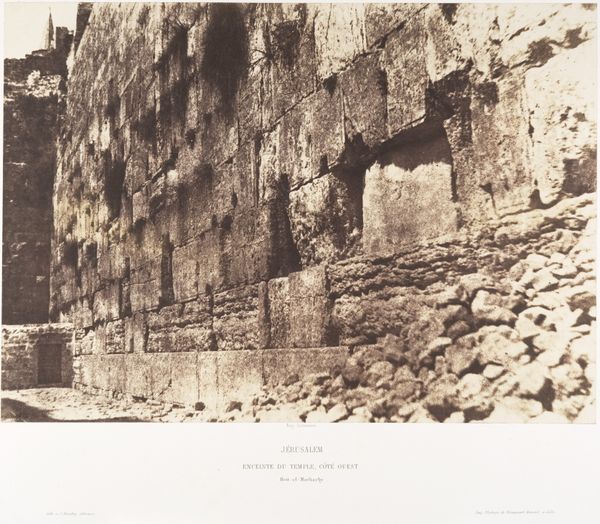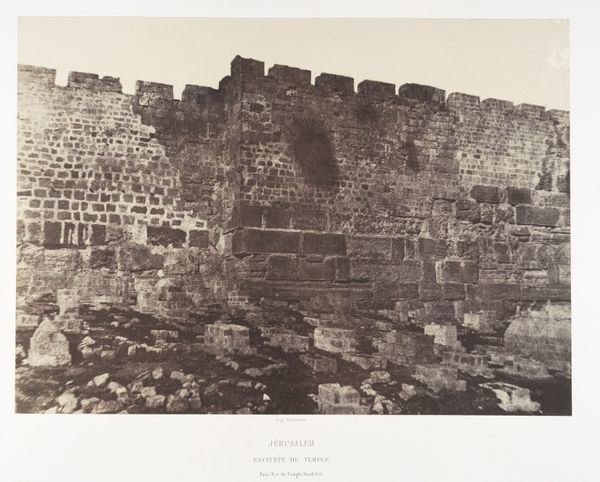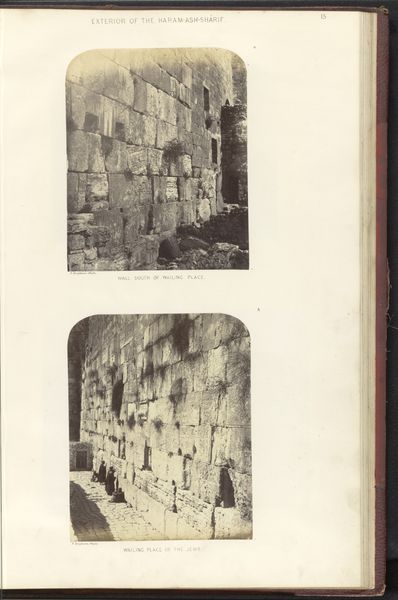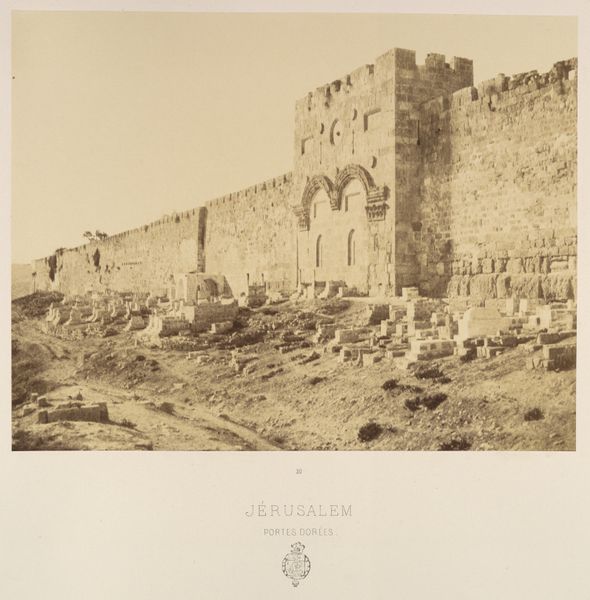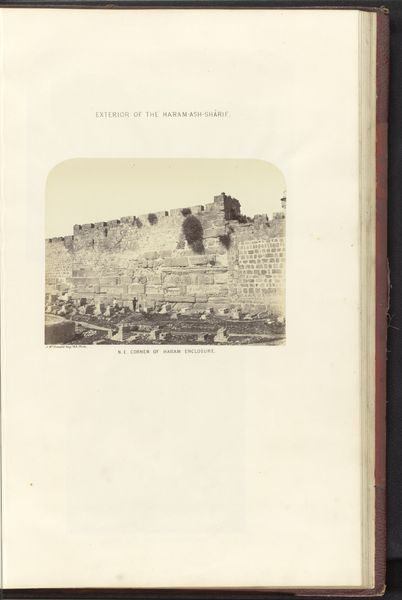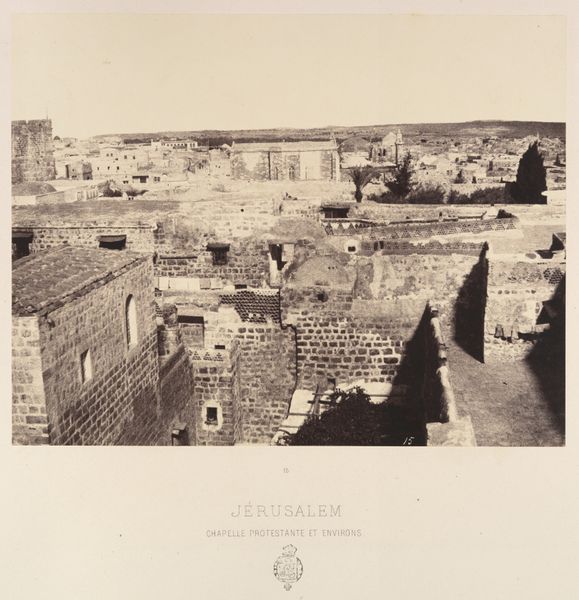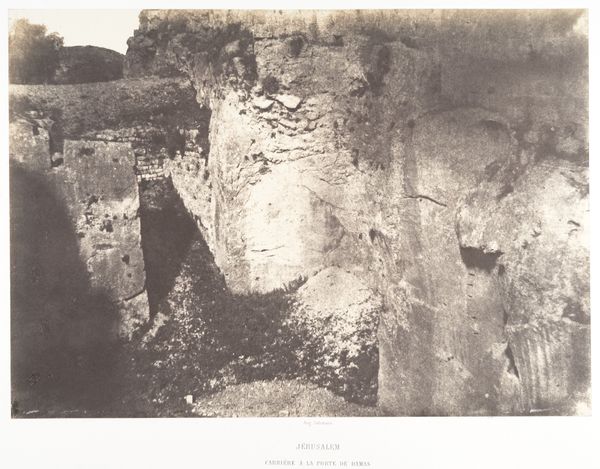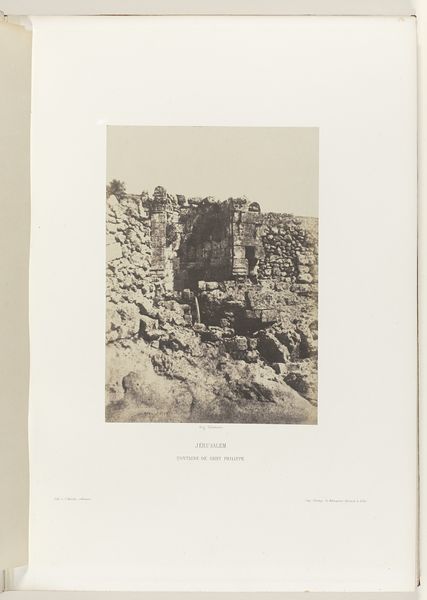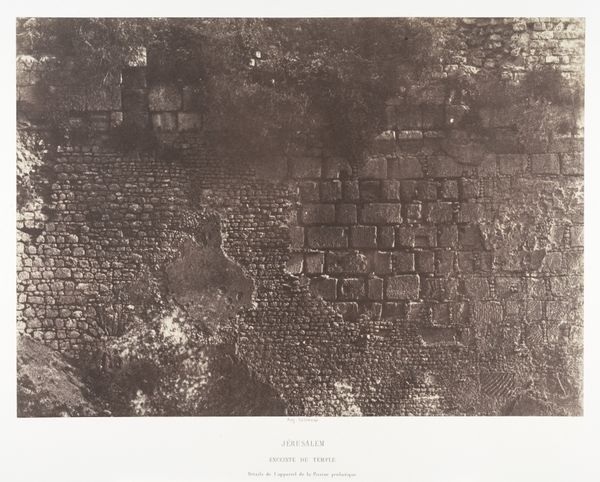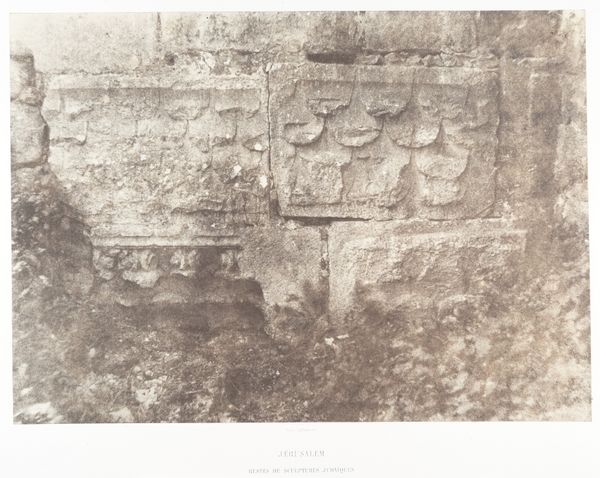
Jérusalem. Mur oú pleurent les juifs. Grandes Assises du Temple de Salomon 1860
0:00
0:00
photography, architecture
#
landscape
#
photography
#
ancient-mediterranean
#
architecture
#
realism
Dimensions: Image: 8 5/8 × 11 1/8 in. (21.9 × 28.3 cm) Mount: 17 15/16 × 23 1/4 in. (45.5 × 59 cm)
Copyright: Public Domain
Curator: This haunting image before us is entitled "Jérusalem. Mur où pleurent les juifs. Grandes Assises du Temple de Salomon," taken in 1860 by Louis de Clercq. Editor: It has a feeling of overwhelming stillness. The light catches the rough texture of the stones, almost oppressive in its sheer scale. The Western Wall has immense historical weight and this comes through strongly. Curator: Indeed. De Clercq, working in a relatively early period of photography, documented religious sites with a distinct perspective. We have to consider how the very act of photographing such a place shapes its reception. Editor: It's fascinating to think about the labour involved. Quarrying those massive stones, the craftsmanship, the very human effort against the ageless, unchanging quality of the wall. Did he have to transport his darkroom equipment to this remote location? Curator: The image underscores European interests in the Holy Land during that period. The rise of archaeological expeditions, and photographic documentation, served imperial interests. It's not merely an objective record but one infused with social and political power. Editor: Yes, and photography itself, at that point, was so tied up in those notions of documentation and "truth," as a material index of reality. Were such images like this being consumed as documentary or more for art purposes in Europe at the time? I would also be interested in examining images of this site from various perspectives as a method of historical production to question power relations. Curator: De Clercq’s technique does allow us to ponder the layers of history inscribed within the stone itself. Moss and discolouration create organic textures across what would otherwise be pure geometry. What impact did photographic tools and materials such as this have on representing religious themes in new ways, making religious experiences into a kind of consumer good? Editor: Absolutely, photography enabled dissemination like never before. It rendered the experience both immediate and somehow removed, inviting reflection on its profound symbolism. We could investigate these tensions between spiritual depth, political dynamics, and their photographic reproduction. Curator: Thinking through the material nature of both photography and the architecture, these photographic practices enable novel perceptions and interactions with the world. Editor: Agreed, delving into the image's social context, materiality, and impact lets us reflect on art's layered significances.
Comments
No comments
Be the first to comment and join the conversation on the ultimate creative platform.
